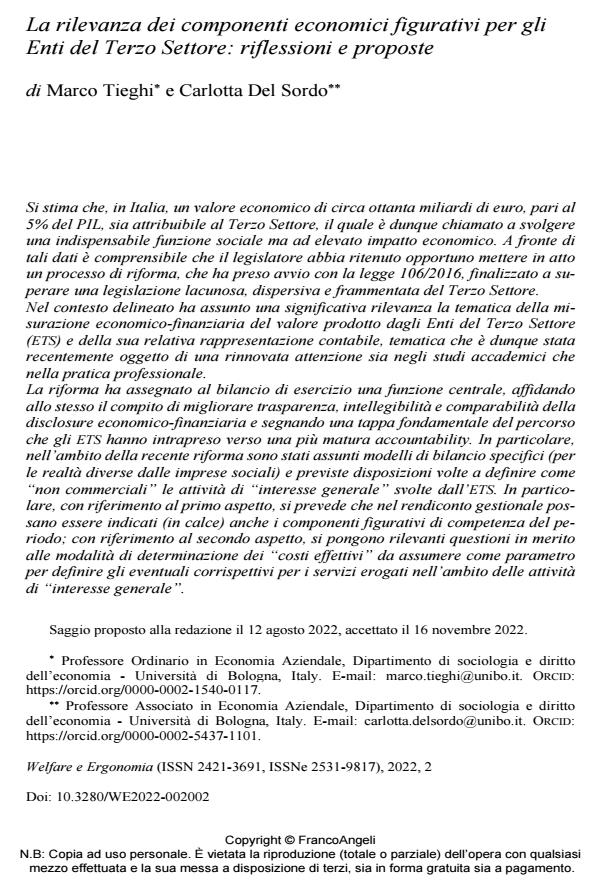The relevance of the figurative economic components for Third Sector Enti-ties: Reflections and proposals
Journal title WELFARE E ERGONOMIA
Author/s Marco Tieghi, Carlotta del Sordo
Publishing Year 2023 Issue 2022/2
Language Italian Pages 14 P. 13-26 File size 252 KB
DOI 10.3280/WE2022-002002
DOI is like a bar code for intellectual property: to have more infomation
click here
Below, you can see the article first page
If you want to buy this article in PDF format, you can do it, following the instructions to buy download credits

FrancoAngeli is member of Publishers International Linking Association, Inc (PILA), a not-for-profit association which run the CrossRef service enabling links to and from online scholarly content.
It is estimated that, in our country, an economic value of about 80 billion euros, equal to 5% of GDP, is attributable to the Third Sector, which is therefore called upon to perform an indispensable social function but with a high economic im-pact. Given these data, it is understandable that the legislator has implemented a reform process, which began with Law 106/2016, aimed at overcoming a defi-cient, dispersed and fragmented legislation of the Third Sector. In the context outlined, the issue of the economic-financial measurement of the value produced by the Third Sector Entities and its related accounting represen-tation has assumed significant importance, a topic that has therefore recently been the subject of renewed attention both in academic studies and in profes-sional practice. The reform assigned a central function to the financial statements, entrusting it with the task of improving the transparency, intelligibility and comparability of economic-financial disclosure. However, the regulatory references leave open numerous questions. This contri-bution aims to try to investigate these issues and to offer possible solutions, in the light of the renewed regulatory context of reference. .
Keywords: Financial statements; Third sector entitites; Transparency; Comparability; Economic and financial disclosure
Marco Tieghi, Carlotta del Sordo, La rilevanza dei componenti economici figurativi per gli Enti del Terzo Settore: riflessioni e proposte in "WELFARE E ERGONOMIA" 2/2022, pp 13-26, DOI: 10.3280/WE2022-002002